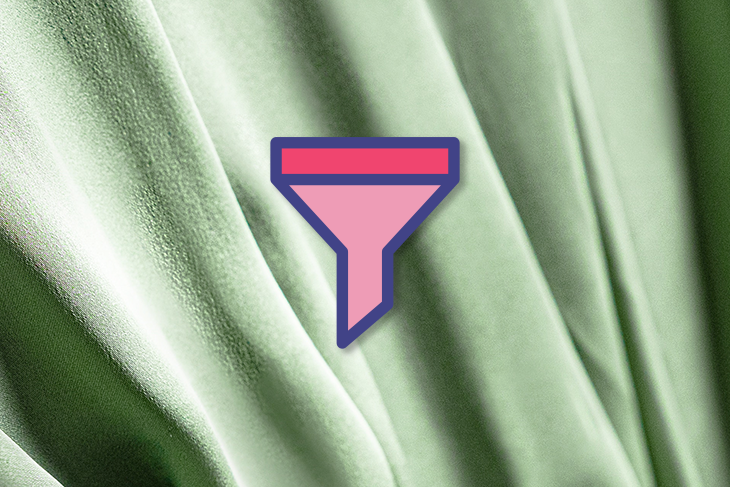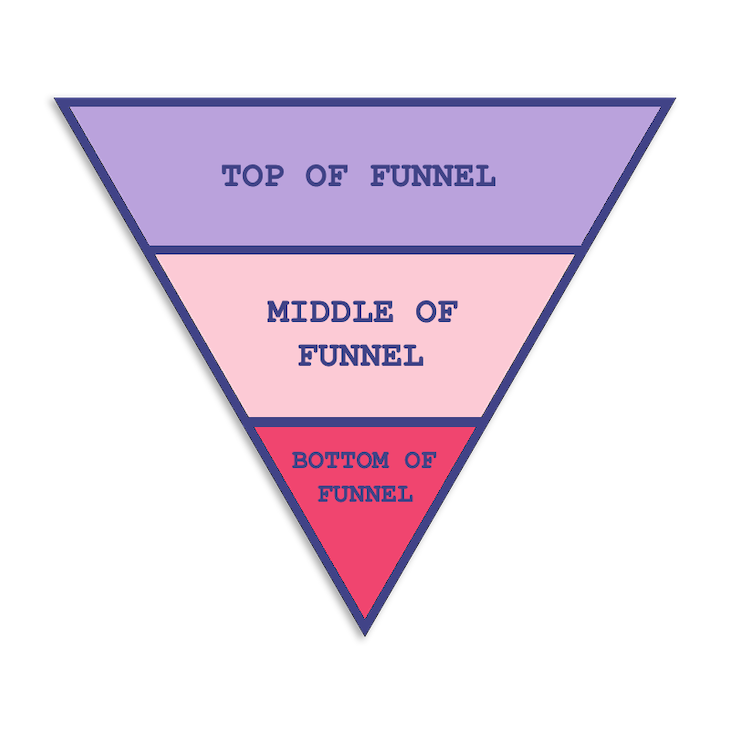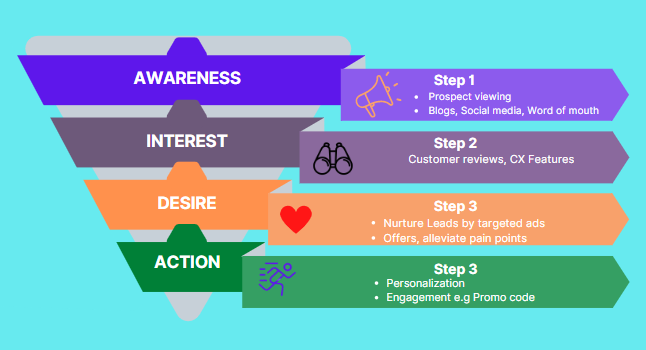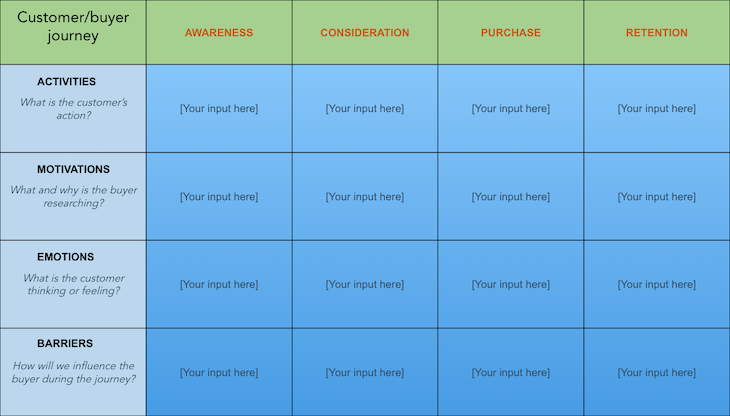In this guide, we’ll define what the conversion funnel is, outline its three main levels and four stages, and walk through steps to analyze the customer journey and optimize conversion.

We’ll also review how to calculate the funnel conversion rate and important metrics to track customers’ actions and behaviors through the funnel.
The conversion funnel is a visual view of the customer journey that leads them to make purchases, subscribe, or sign up to use a product or service. Visually, the conversion funnel is typically depicted as a wider funnel at the top and narrowed at the bottom.
Customers are converted when they move from the top to the bottom of the funnel. The top-to-bottom funnel journey shows the gradual decrease in customer stages, typically addressed as leads, acquisition, and retention.
Often, leads are higher than the customer’s final acquisitions and retention number. Therefore, the funnel’s upper part is often visualized as wider.
Broadly speaking, the conversion funnel is divided into three levels:
All these terms refer to the level of indulgence customers have with the product at different stages of making a buying decision:

Let’s review the meaning of these terms more closely:
The top of the funnel represents the stage during which a lead lands, whether through an internet search, online advertising, or other means, and navigates to your application or website but may be unsure about the requirements or exact needs.
At this stage, customers spend time viewing various online products and sites to decide what works best for their needs.
At the middle-of-funnel stage, the lead listens to the brand, stays connected with them through trial and email subscription, and is aware of the products to some extent.
The middle of the funnel is also called the consideration stage. Customers know their expectations, so they’re likely to bounce if they can’t relate to the value and quality of the brand/site/product.
The bottom of the funnel is the narrowest part and contains the most highly qualified leads close to their final buying decision. Therefore, the bottom of the funnel is also called the stage of nurturing leads.
The stages of the conversion funnel typically depend on the type of business. Often, it is divided into four levels:

Each stage has its purpose, but they all have a single goal: to draw customers to the final conversion. Hence, each stage becomes very important and demands a good customer experience to improve the stickiness and session time until a lead meets conversion.
The awareness stage pulls visitors by raising awareness about your product, services, and website.
First, it’s important to determine the sources that bring traffic to your site. The next step is to develop tactics to bring more customers from these and other sources.
For instance, a home baker might run a small D2C business by posting ads, customer stories, curated images, and discounts on her website, Instagram, and Facebook pages to generate leads and brand awareness.
Once leads are brought to your website or made aware of your product and brand, interest is the key to moving them to the next funnel stage.
If leads don’t find the brand appealing, they’ll bounce quickly from this stage.
Let’s look at an example of how Smytten, an Indian e-commerce brand selling wellness and beauty products, constantly nurtured leads by offering various product samples through trial points to trigger their interest.
Smytten co-founder Swagat Sarangi explained this sample strategy in the context of funnel conversion: “If you see the funnel, we are focusing on the upper part of the funnel, which is awareness, intent, and consideration, and the transaction being a byproduct of it.”
Interest and intention eventually turn into a conversion of around 10–20 percent. Here, Smytten’s sampling strategy is based on a top-of-funnel strategy to improve all three: acquisition, retention, and customer lifetime value (LTV).
The context of desire revolves around benefits, values, status, and pride associated with your brand that a user can swear by.
Once desire is activated, a brand must nurture these highly qualified leads to move down the funnel and convert. Workflow campaigns, sample strategies, and personalized content camping are a few techniques to keep these qualified leads coming back to your product/site/brand often.
Action is the final stage, where conversion and basket size matter. During this stage, you position your brand/offers/value straight to the customer so that they not only buy, but potentially buy more (upselling) and other products in your portfolio (cross-selling).
Churn happens when the right strategy is not in place at this stage or later.
For example, a nutritional and healthcare startup launched a website that offers varieties of freshly cooked meals in tier-1 cities in India. It generated much curiosity during the pandemic.
Such cost-effective service was a boon to weight-watchers and fitness cautious who prefer low-carb, high-protein, or ketogenic food to lose weight. However, the churn rate was high across all cities after a few months.
The reason is that all meals were delivered in the morning and customers were asked to refrigerate and warm the meal before they ate. Health-conscious customers wanted a feel-good factor of freshness associated with the food and preferred each meal delivered separately at the designated times. We can imagine the cost to the company of not activating and nurturing the converted leads to stick with them.
You can engage qualified leads via tactics such as free trials, email offers, loyalty programs, and free samples. Myntra Insider is another example of attracting existing or new customers to stick with it.
The customer journey and conversion funnel are two different things. The basic difference is that funnel conversion is a linear view whereas customer journey maps show the individual choices customers make to finish a goal using your product/brand/site.
The customer journey complements the conversion funnel and helps the growth team understand the different ways customers interact with the product. If you can optimize their touch points, they could turn into potential customers.
The customer journey map template below will help you track the customer journey across the four stages of the funnel path:

You can download this customer journey map template for free. To customize and use it, select File > Make a copy from the menu bar at the top.
There are six crucial funnel metrics you should measure to understand the benefit of funnel optimization. These metrics give insights into buyers’ journeys through the funnel:
The true purpose of optimizing the funnel is to maximize conversion. You can attain this by diving deep into the product analytics and experimenting with customers’ touchpoints.
To optimize the funnel, follow these three steps:
Setting goals is the first step toward building a good conversion funnel.
For this step, you can use one of the most widely known tools, Google Analytics, to set up your funnel optimization. Google Analytics helps the product and marketing teams understand at what stage the user is leaving the conversion funnel.
To begin, the product marketing or growth team assigns a name to the goal — e.g., “downloading the app,” “free trial subscription,” etc.
The next and most important step is to define the funnel, which allows you to recognize where the user is dropping off.
Finally, you can make the goal associated with each stage SMART to make your goal executable.
The next step is to test and validate the important touchpoints by thoroughly analyzing your signup and landing pages.
To validate, it is useful to run a few rounds of A/B and usability tests as experiments to find out which customer journey is the most effective. These test should be tightly focused on the funnel stage st which conversion matters most.
Additionally, pairing the effects of usability and A/B testing can help you narrow down and optimize the choices you give to customers on a page. \
Finally,you should analyze click-through and open rates and test calls to action (CTAs) on the product pages to see what drives the most traffic to your site.
Last but not least, tracking these test results and actionable data is crucial in improving conversion rates. Testing every element and attribute of customer touchpoints is the key to funnel optimization.
The funnel conversion rate is the percentage of leads who complete the conversion goals and advance to the end of the funnel.
To calculate the funnel conversion rate, divide the number of leads that advance through the funnel by the number of leads in the funnel stage, then multiply by 100.
The formula to calculate the funnel conversion rate is as follows:
Funnel conversion rate = (Conversions / Leads) * 100
What constitutes a “good” funnel conversion rate will vary from product to product, market to market, and strategy to strategy. However, the average funnel conversion rate is somewhere between 3 and 7 percent.
It’s a product manager’s responsibility to test and validate hypotheses by comparing different funnel stages before and after fundamental feature changes.
For example, let’s say you’re working for a retail e-commerce company and you built a new feature that enables partial checkout of items in the cart. The change was made based on user feedback and to improve the cart abandonment rate.
But the new change will not create the magic overnight unless you understand how the adoption rate of the new feature will impact each funnel stage.
Let’s assume you look at your funnel metrics after the launch and find that not many customers were using the new partial checkout option. After employing usability testing, heatmaps, and A/B testing tools to investigate what’s wrong with the new feature, you might realize that the partial checkout experience is hard to use and does not appeal to customers at a glance.
Another simple way to use funnel stages is to group sessions of user cohorts and then compare the conversion rate between them to understand what went wrong. Gaining visibility into the users’ behaviors and actions help PMs prioritize what needs improvement.
Featured image source: IconScout

LogRocket identifies friction points in the user experience so you can make informed decisions about product and design changes that must happen to hit your goals.
With LogRocket, you can understand the scope of the issues affecting your product and prioritize the changes that need to be made. LogRocket simplifies workflows by allowing Engineering, Product, UX, and Design teams to work from the same data as you, eliminating any confusion about what needs to be done.
Get your teams on the same page — try LogRocket today.

A practical framework for PMs to use AI in ideation without sacrificing judgment, strategy, or decision quality.

A practical five minute revenue estimation method to help product managers compare ideas, drop low impact features, and prioritize smarter.

A practical guide for PMs who want to stop being bottlenecks, delegate smarter, and lead teams effectively with a clear ownership framework.

Stop letting unreliable data block features. Treat data as inventory to track quality, ownership, and ship with confidence.